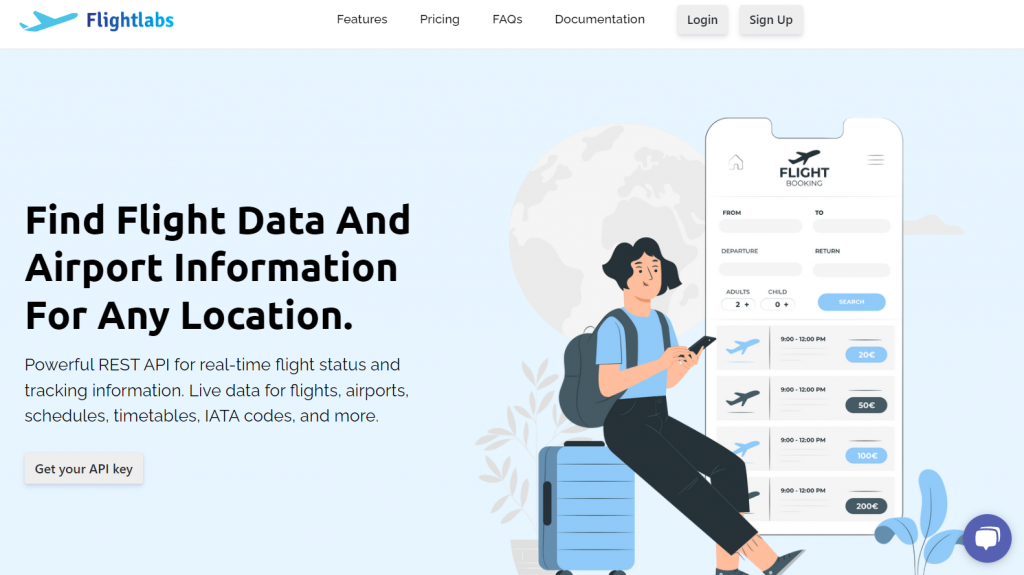The future of air travel organizations is Airport APIs because they are the best way to get information about airports, flights, and more related info. They can help users to find out about anything, from the best time to arrive at an airport to the best way to get there. This tech makes it easier than ever before to plan a trip. Airport APIs are also great for travel companies and airlines because they can use them to get information about airports around the world and improve their UX.

What Are Airport APIs?
Airport APIs, as we said, are software that provides data commonly including flight information, terminal maps, historical flight data, and more. Airport APIs make planning a trip easier than ever before because they provide all of the information users need in one place. This means that they don’t have to spend hours searching for different websites and databases; instead, just focus on planning their trip and enjoying it once it’s underway. Plus, they’re easy to use and they’re constantly improving to provide you with the best possible experience.
Besides, these APIs are useful for airlines as well. The aviation industry is subject to stringent laws and regulations to ensure safety, effectiveness, and environmental preservation. Airlines are required to follow a set of international best practices and standards for providing services to the aviation industry. They need to know where they may fly based on a variety of variables, including weather patterns, scheduling, and specific routes. Airlines must utilize Airport APIs to retrieve data about all airports worldwide.
Flightlabs: One Of The Finest Airport APIs Available
Use FlightLabs as your source for flight data APIs for a variety of reasons. The information is trustworthy and correct first and foremost. You may be sure that you’re obtaining the most recent data possible because our API keeps track of all the major airlines throughout the world.
Flightlabs offers a few distinctive features that you won’t find with other suppliers in addition to accuracy. You can quickly tailor the data you receive and guarantee that you only obtain the information necessary for your organization by making use of their robust filtering tools. They also offer historical flight data, which is very helpful for forecasting and analytics.

Flightlabs‘ API Endpoints
Here is one instance. In addition to giving information about current flights, the FlightLabs API can look up information about earlier flights. Every flight in the world may have its flight data accessed by the Historical Flights endpoint, which will then offer historical data about that flight. You can supply the API with the following variables; “code” and “type” are necessary.
| Object | Description |
|---|---|
access_key | [Required] Your API access key, which can be found in your account dashboard. |
limit | [Optional] Limit value for output, integer max 10000 |
flightIata | [Optional] Flight IATA code |
flightIcao | [Optional] Flight ICAO code |
flightNum | [Optional] Flight Number |
airlineIata | [Optional] Airline IATA code |
airlineIcao | [Optional] Airline ICAO code |
depIata | [Optional] Departure airport IATA code |
depIcao | [Optional] Departure airport ICAO code |
arrIata | [Optional] Arrival airport IATA code |
arrIcao | [Optional] Arrival airport ICAO code |
aircraftIcao | [Optional] Aircraft ICAO code |
regNum | [Optional] Aircraft registration number |
aircraftIcao24 | [Optional] Aircraft ICAO24 code |
status | [Optional] Status of the flight (started, en-route, landed, unknown) |
Example API Response:
{
"success": true,
"data": [
{
"aircraft": {
"iataCode":"B789",
"icao24":"C01040",
"icaoCode":"B789",
"regNumber":"C-FGDZ"
},
"airline": {
"iataCode":"AC",
"icaoCode":"ACA"
},
"arrival" : {
"iataCode":"GRU",
"icaoCode":"SBGR"
},
"departure" : {
"iataCode":"EZE",
"icaoCode":"SAEZ"
},
"flight" : {
"iataNumber":"AC91",
"icaoNumber":"ACA091",
"number":"91"
},
"geography" : {
"altitude":12496.8,
"direction":31.15,
"latitude":-26.98,
"longitude":-49.95
},
"speed" : {
"horizontal":880.74,
"isGround":0,
"vspeed":-1.188
},
"status":"en-route",
"system" : {
"squawk":null,
"updated":1665523076
}
},
{ ... },
]
}
How To Use Flightlabs
- Create your account on FlightLabs. Next, choose your preferred endpoint and type the value that is required.
- Call the API after using these codes. A distinct API key can be obtained from your account dashboard.
- After that, simply click “Run,” and you’re done! You will see the API response on your screen. Choosing a programming language is another option.
Want to learn more about this? Go check to Get The Most Out Of Your Airport Data With APIs

